-
About
- About Listly
- Community & Support
- Howto
- Chrome Extension
- Bookmarklet
- WordPress Plugin
- Listly Premium
- Privacy
- Terms
- DMCA Copyright
- © 2010-2025 Boomy Labs


 Jodie Taylor
Jodie Taylor
Listly by Jodie Taylor
A collection of critical theoretical perspectives on creativity, art, pop culture, media and the culture industry.

The Frankfurt School argued that reason is dangerous, mass culture deadening, and the Enlightenment a disaster. Were they right?
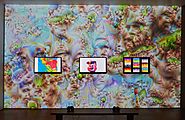
Does the digital artwork lose its aura as it is made more accessible to institutions, the web, and other networks? Or is the definition of aura changing?

Critical theory is a social theory oriented toward critiquing and changing society as a whole, in contrast to traditional theory oriented only to understanding or explaining it. Critical theories aim to dig beneath the surface of social life and uncover the assumptions that keep us from a full and true understanding of how the world works. Critical theory emerged out of the Marxist tradition and it was developed by a group of sociologists at the University of Frankfurt in Germany who referred to themselves as The Frankfurt School.

Theodor Adorno presents the theory of standardization and replication of popular music as a critical theory of popular culture. In many ways, Adorno’s theory of the standardization of popular culture stands true today, however there are some ways that his theory does not prove to be entirely persuasive. For many chart-topping hits, it is evident that there is a very confining and standardizing element, but how then can we account for the greatly varying tastes across classes?
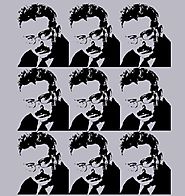
How has capitalism affected our experiences of art and the media? In the third of his eight-part series on critical theorist Walter Benjamin, Andrew Robinson examines Benjamin's famous thesis that mechanical reproduction has transformed the arts, and explores what a 'political art' might look like.
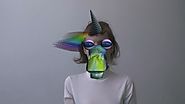
The Lorna Mills-organized Ways of Something, a collaboration with hundreds of net artists, shows how fast old assumptions about media are crumbling in art.
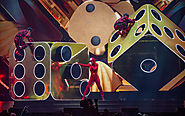
For Adorno, popular culture is not just bad art – it enslaves us to repetition and robs us of our aesthetic freedom. Adorno insisted on high standards – culture was not merely a matter of technical progress (in composing more beautiful, more complicated music, for example) but also (if indirectly) a matter of morality.
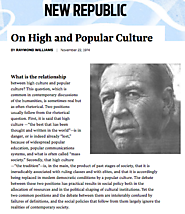
What is the relationship between high culture and popular culture? This question, which is common in contemporary discussions of the humanities, is sometimes real but as often rhetorical. Two positions usually follow from the rhetorical question. First, it is said that high culture —“the best that has been thought and written in the world”—is in danger, or is indeed already “lost,” because of widespread popular education, popular communications systems, and what is often called “mass society.”
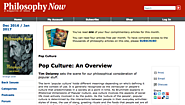
Tim Delaney sets the scene for our philosophical consideration of popular stuff.

I think it is fair to suggest that, at least when it comes to his critique of popular culture and music, Adorno is widely perceived as a ‘cultural elitist’ and somewhat of a ‘snob’. As I recently read on a well known culture blog: Adorno’s critique is apparently ‘scathing and sometimes just plain weird’, with the author continuing that Adorno’s ‘dislike of jazz’ is ‘irrational’. The truth is that negative opinion about Adorno’s theory of popular culture and music is not at all uncommon. But it remains to be said or even recognised that much of the distaste or complete dismissal of Adorno’s argument ultimately boils down to a wide misreading of his critique.
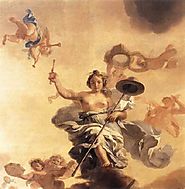
The aim of this article is to clarify what “authenticity” of the artwork entails in an era of endless technological reproductions, digital art, reenactment art, appropriation art, pirated artworks and so on. The question of an art work’s authenticity is far from being obsolete or inappropriate in the era of technologically reproduced art and globalized culture. Yet, this does not mean that the very understanding of “authenticity” in the realm of culture cannot be critically evaluated. Part of this critical evaluation has to do with a specific understanding of authenticity, according to which “authentic” art or traditions imply exclusivity: if one type of art or cultural tradition is deemed authentic, then others must be counterfeit (inauthentic). I suggest overcoming the symbolic violence inherent in the idea of authenticity and rather considering the ways in which a cultural product acquires an aura of authenticity.
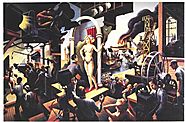
“The importance of the culture industry in the spiritual constitution of the masses is no dispensation for reflection on its objective legitimation, its essential being, least of all by a science which thinks itself pragmatic.” That is the warning given by Adorno in this essay, in which he looks back at his earlier writings on the culture industry.
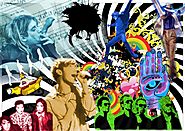
The correspondence between Theodor W. Adorno and Walter Benjamin – two central figures in the development of critical theory associated with the Frankfurt School – has been called “one of the most significant documents in the history of neo-Marxist literature” (Buck-Morss 1977: 139).[1] Adorno and Benjamin shared an instant intellectual kinship, and throughout his life Adorno was greatly influenced by Benjamin’s method for tracing fragmentary elements into constellations of interconnected relationships (Jameson 1990; Jay 1984). But their correspondence also revealed significant disagreements, especially in an exchange of letters that expressed Adorno’s negative responses Benjamin’s essays on art, Kafka, Baudelaire and nineteenth century Paris (Adorno et al. 2007: 100-41).[2] A “debate” or “dispute” between Benjamin and Adorno has since been identified about everything from aesthetics and mass culture to dialectics and Disney (Arato and Gebhardt 1982; Buck-Morss 1977; Hansen 1993; Lunn 1982; Rosen 2004; Wolin 1982).

While T.W. Adorno is a lively figure on the contemporary cultural scene, his thought in many ways cuts across the grain of emerging postmodern orthodoxies. Although Adorno anticipated many post-structuralist critiques of the subject, philosophy, and intellectual practice, his work clashes with the postmodern celebration of media culture, attacks on modernism as obsolete and elitist, and the more affirmative attitude toward contemporary culture and society found in many, but not all, postmodern circles. Adorno is thus a highly contradictory figure in the present constellation, anticipating some advanced tendencies of contemporary thought, while standing firming against other regnant intellectual attitudes and positions.
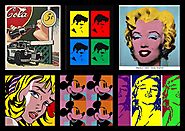
In today’s multimedia, virtual world, the notion of the culture industry is perhaps more pertinent than ever before. Mass entertainment now spans an increasingly diffuse yet seemingly interspersed array of media forms, including television, film, the Internet and the rise of the DVD box set (with the latter’s special features and writer/producer/actor commentary all adding to the allure of the product). A key aspect of the power that each of these media possess is derived from their ability to immerse the viewer, reader or listener within not only a franchise, but a fantasy world that is, at least on the surface, very different to their own. Thus, we find a very powerful infrastructure that engenders, supports and maintains new types of fan culture, among the sci-fi community for example. Indeed, alongside the increasing organization of certain fan bases has come a plethora of new roles for fans and new ways of displaying loyalty to their chosen franchise. If fandom as a vocation is not new, the digital age has ensured that the charity and passion of fans has certainly reached higher levels of professionalism and technical proficiency than before.
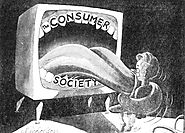
Paul Lazarsfeld (1942), one of the originators of modern communications studies, distinguished between what he called a “administrative research,” that deployed empirical research for the goals of corporate and state institutions, and “critical research,” that he associated with the Frankfurt School. Critical research situates the media within the broader context of social life and interrogates its structure, goals, values, messages, and effects. It develops critical perspectives by which media are evaluated and appraised.
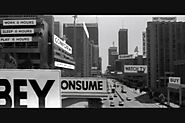
Despite the extensive criticism it has received within media and cultural studies, there is more to Adorno and Horkheimer’s theory than the suggestion of mass culture as fundamentally characterised by passive consumption. That is really only a symptom (though a very important one for Adorno and Horkheimer) of the general ‘malaise’ of mass culture, and one that has received far too much emphasis in the aforementioned fields to the detriment of the discussion of its other aspects.

On his way to becoming an international icon, the subversive and secretive street artist turned the art world upside-down.
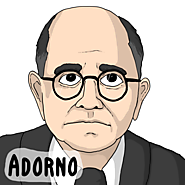
On Theodor Adorno and Max Horkheimer's "The Culture Industry: Enlightenment as Mass Deception" from Dialectic of Enlightenment (1944), plus Adorno's essay "Culture Industry Reconsidered" (1963).
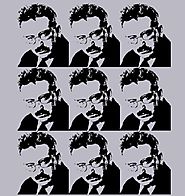
How has capitalism affected our experiences of art and the media? In the third of his eight-part series on critical theorist Walter Benjamin, Andrew Robinson examines Benjamin's famous thesis that mechanical reproduction has transformed the arts, and explores what a 'political art' might look like.
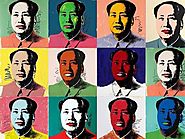
The idea of creative industries is based on an economy that has no way to count the things that matter.
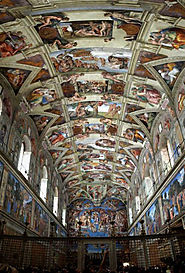
The distinction between the the "high" culture of the elite and the "low" culture of the masses has become increasingly blurred over time.
This web summary introduces you to the topic.
Source: Boundless. “High and Low Culture.” Boundless, 21 Jul. 2015. Retrieved 21 Dec. 2015 from https://www.boundless.com/sociology/concepts/high-and-low-culture-0-5619/

Intelligence Machine to help content creators, brands spot accurate trends about audience viewership, says Culture Machine.

Two segments from MTV's show TRL from 2000, featuring 'NSync's 'It's Gonna Be Me' and Eminem's 'The Way I Am.' The clips illustrate many theoretical ideas developed by the Frankfurt School critics Adorno & Horkheimer under the umbrella of 'the culture industry.'

Adorno on film and mass culture: The culture industry reconsidered by Thomas Andrae. Jump Cut: A Review of Contemporary Media, no. 20, 1979, pp. 34-37